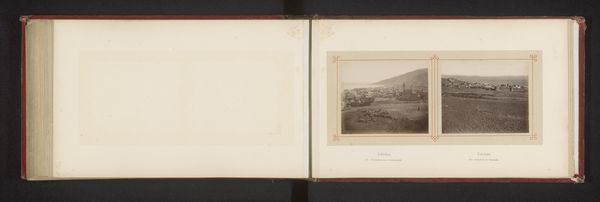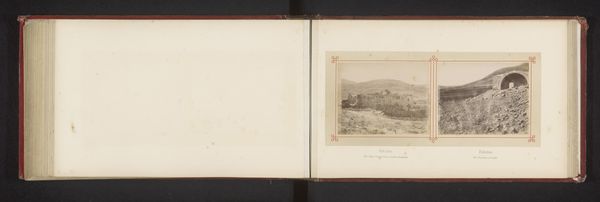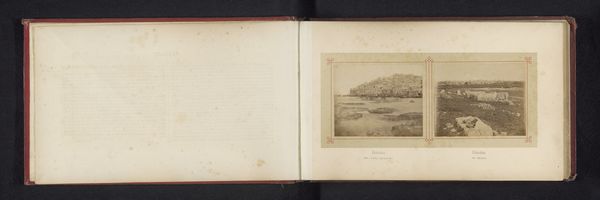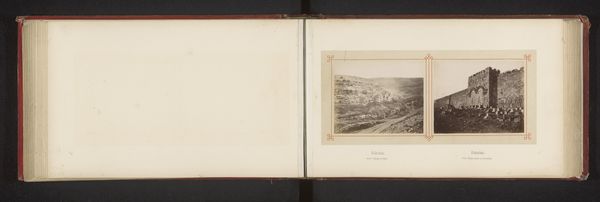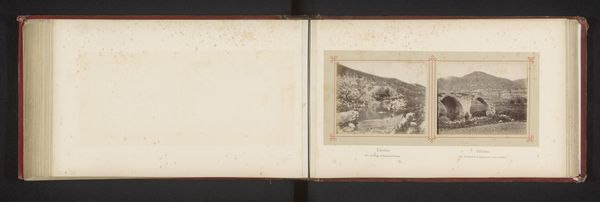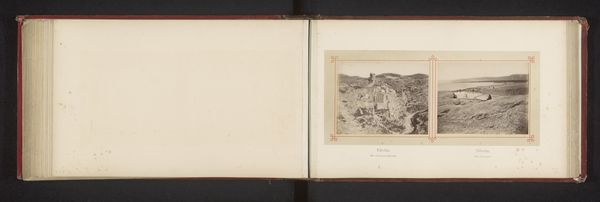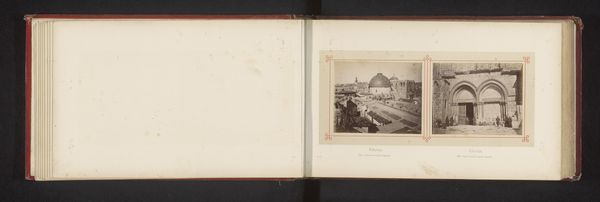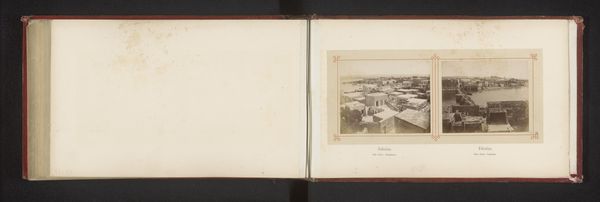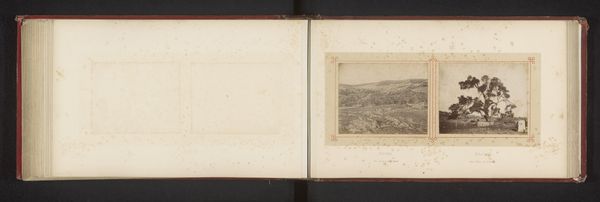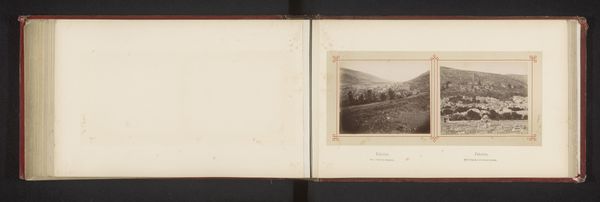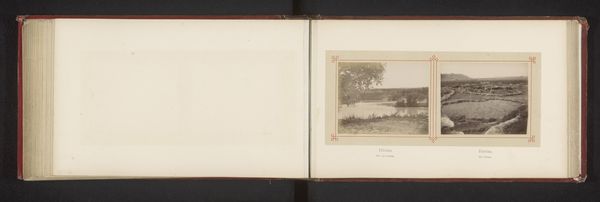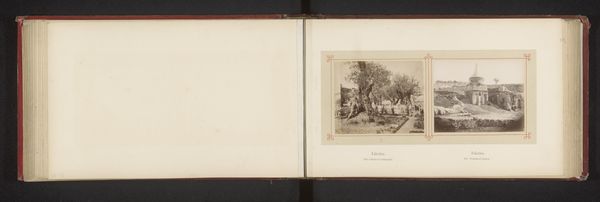
#
aged paper
#
homemade paper
#
hand drawn type
#
hand-drawn typeface
#
fading type
#
thick font
#
watercolour bleed
#
white font
#
watercolor
#
historical font
Dimensions: height 77 mm, width 95 mm
Copyright: Rijks Museum: Open Domain
Curator: So, here we have a double image titled "Kerk van de Visitatie," dating from before 1878, captured by Félix Bonfils. It resides here at the Rijksmuseum. What's your initial reaction? Editor: It's giving me antique bookstore vibes. The sepia tones, the album setting... it feels like holding history. It also evokes a strange sense of calmness despite being essentially abandoned buildings. Curator: Absolutely. Bonfils was part of a wave of photographers documenting the Middle East for a European audience, shaping perceptions through the colonial lens. These images were often framed within broader orientalist narratives. Note how the placement on the album page almost flattens these historical realities. Editor: Colonial gaze or not, there's something deeply compelling in the architecture and the play of light. See the handwritten typeface. They bleed, they’re imperfect. Adds such texture to it all! Makes you wonder who was making these decisions, composing each page. It feels very crafted. Curator: Yes, that handwritten script, the almost casual arrangement within the album, all points towards a specific kind of consumption. This wasn't just about information, but about owning a piece of a distant land, aestheticizing its spaces and, in doing so, subtly reinforcing power dynamics. Editor: Power dynamics definitely simmering. Though I can't shake off this odd nostalgia, as though peering into another’s memories. All these old photos tend to awaken something intimate in you. And who is to say if their making, placing, keeping it was about power… sometimes people make photographs out of sheer longing, wouldn’t you say? Curator: Perhaps, but even personal acts are often interwoven with broader social and political forces. Take the fading type, for example. It symbolizes, on the one hand, natural decomposition of materials, while on the other the decomposition of ideas, how meaning can degrade, particularly the ones that bolster colonial structures and misrepresentations. Editor: Hmm… maybe that decaying aspect suggests we must consider who we want to be in history… that we all are actors playing on a stage. This work kind of encapsulates it all: memory, mortality, performance. I enjoyed how my perspective shifts around this notion with this image. Curator: I think that's a fitting way to summarize the complex layers within Bonfils' work. It invites both immediate aesthetic appreciation and a deeper, critical engagement with history and representation.
Comments
No comments
Be the first to comment and join the conversation on the ultimate creative platform.
